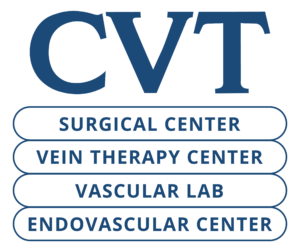Varicose veins are enlarged, twisted veins that usually appear on the legs. They are often blue or purple and can be bulging or raised above the skin’s surface. When the valves in the veins become weak or damaged, it causes blood to pool and the veins to stretch, resulting in varicose veins. As we grow older, or as a result of specific genetic and lifestyle factors, they may become increasingly noticeable. Varicose veins can be both unsightly and uncomfortable, causing symptoms such as pain, swelling, and aching legs. Regular exercise can help alleviate these symptoms and reduce the risk of developing additional varicose veins.
Managing Varicose Vein Symptoms with Exercise
Exercise plays a crucial role in managing varicose vein symptoms. While it may not eliminate varicose veins, it is one of the most effective ways to enhance overall vein health, reduce the risk of developing new ones, and alleviate symptoms like swelling and leg pain. Regular physical activity improves blood circulation throughout the body, including the legs, which can prevent blood from pooling in the veins and causing them to enlarge and become varicose. Strengthening the calf muscles through regular exercise can increase their ability to pump blood from the feet to the heart more efficiently. Engaging in regular physical activity can also assist in managing your weight. Excess weight can put pressure on your veins, impacting blood flow and contributing to damage to the small valves that keep your blood pumping.
What type of exercise is best for managing varicose veins?
Not all exercises are created equal when it comes to reducing the symptoms of varicose veins. High-impact exercises exacerbate varicose veins. Activities involving excessive jumping, heavy lifting, or straining can increase venous pressure, potentially worsening the situation.
Low-impact exercises that minimize stress on the joints are particularly beneficial for individuals with varicose veins for several reasons. Firstly, these exercises promote blood circulation without placing excessive pressure on the venous system. By supporting a gradual and steady blood flow, they help reduce the risk of worsening the condition. Their lower intensity also makes them suitable for those experiencing discomfort, pain, or fatigue due to varicose veins. These activities are ideal for people of all ages, including those starting or returning to exercise after a break. Overall, low-impact exercises offer a safer option for individuals with varicose veins to stay active without compromising their vein health.
What are some effective low-impact exercises to manage Varicose Veins?
Incorporating exercise into your daily routine is vital to maintaining vein health and preventing varicose veins. Some low-impact exercises that are particularly beneficial for preventing and managing varicose veins include:
- Walking: Walking is a low-impact exercise that helps to improve blood circulation in the legs without putting excessive strain on the veins. Aim for at least 30 minutes of brisk walking every day.
- Cycling: Cycling is another excellent low-impact exercise that promotes blood flow and strengthens the leg muscles. Consider cycling outdoors or using a stationary bike at home or the gym.
- Swimming: Swimming is a great full-body workout that is gentle on the joints and promotes circulation. Water pressure can also help alleviate swelling and discomfort in the legs.
- Leg exercises: Specific leg exercises, such as leg lifts, calf raises, and ankle rotations, can help strengthen the muscles supporting the veins and improve blood flow in the legs.
If you have existing varicose veins or are concerned about vein health, consult with one of our experienced physicians today. They can provide personalized advice and guidance based on your needs and medical history, and can help assess your varicose veins’ severity, recommend appropriate exercises, and provide treatment options if necessary.
At CVT Surgical Center, our local practice is committed entirely to providing the most advanced treatment and management of vascular issues, including varicose veins. CVT Surgical Center has been a leader in managing vascular disorders since 1957.

